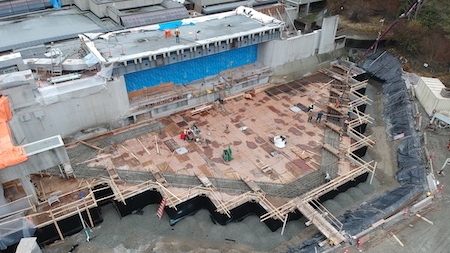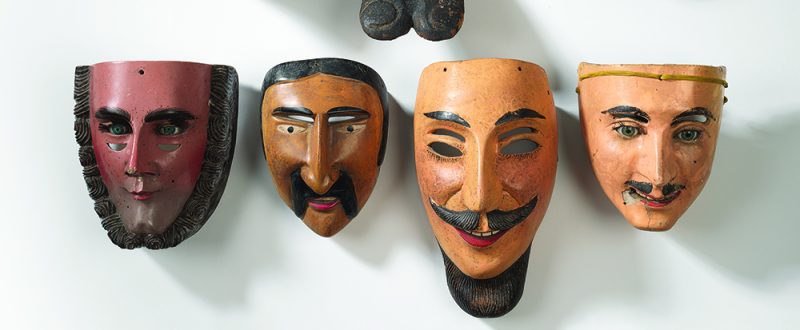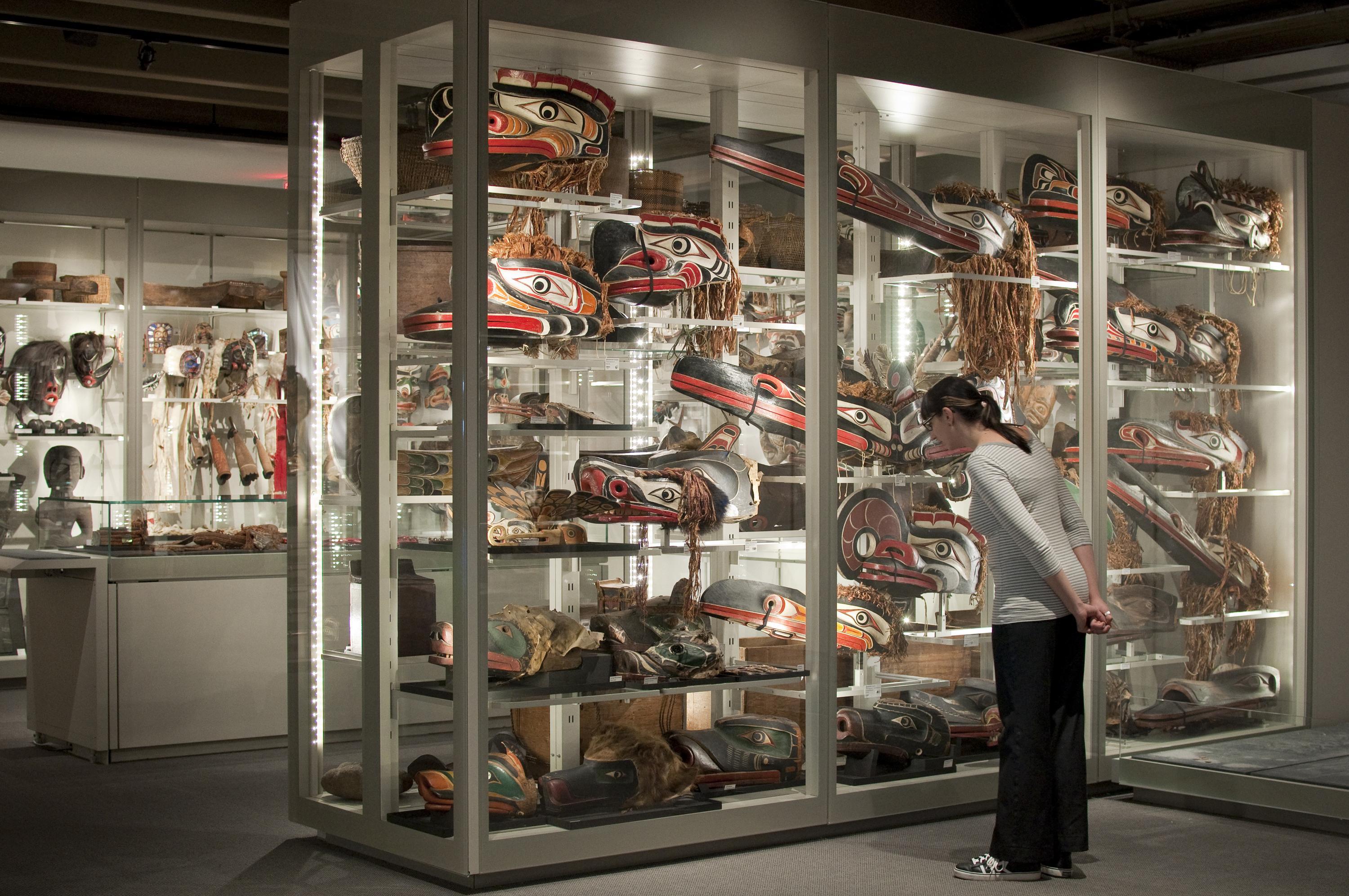On November 14 and 15, MOA hosted a Canadian Conservation Institute (CCI) Workshop on Wet Basketry. Participants in the workshop included representatives from the hato:lo Nation, Musqueam Indian Band, Neskanlith Indian Band, as well as representatives from MOA, the UBC Laboratory of Archaeology, the Royal BC Museum, the Sooke Region Museum, and local archaeologists and conservators.
The first morning of the two-day workshop began with introductions and presentations in the morning including a discussion of the types of environments that wet basketry is most often found in, and the physical, chemical and biological processes of deterioration that can cause a rapid breakdown of basket fibers.
The types of materials used in the production of West Coast basketry were detailed along with an examination of the various constituents and structures of the different plant materials. Materials discussed included the withes, branches and bark of Western red cedar, spruce root and birch bark. Of the three species, birch bark is the most difficult to treat due to the presence of suberin, a waxy substance whose main function is to prevent water from penetrating the woody tissue and represents 39% of the bark’s composition.
In-situ recovery techniques for constructing temporary supports to aid in the removal of deteriorated basketry were also discussed. Several techniques were detailed including supports for underwater sites (the simplest was a plastic bucket with drilled holes), and block lifting and shelling techniques using Plaster of Paris, gauze bandage, polyurethane foam and dry ice to freeze the soil. Facing using a Rhoplex B-60-A emulsion with gauze and Paraffin with gauze were described. Encapsulation methods discussed included both Plaster of Paris and polyurethane foam.
The final presentation of the day reviewed various cleaning and stain removal techniques for wet basketry, performed prior to treatment and drying, such as mechanical cleaning using soft tools and brushes with running water or while the basket is immersed. Two cleaning instruments were also examined. The first was a Cavitron, a dental tool that uses high frequency pulses to vibrate dirt off the surface of the basket, the same way it removes plaque from teeth. The second instrument was an aspirator, an underwater vacuum gentle enough to use on fragile surfaces that cannot be brushed.
After lunch the afternoon was spent practicing different cleaning and lifting techniques discussed in the morning. The Cavitron was the most popular, mainly due to the almost instantaneous removal of dirt and the Cavitron’s ability to remove dirt from in-between basketry elements. Everyone at the workshop had the opportunity to try the different methods, although some opted out of working with the Plaster of Paris due to the difficulty in keeping oneself un-plastered.
Day two of the workshop began with presentations. The first discussed on-site and before treatment storage and transportation with an examination into safe packing materials that can be used in the field. Cliff Cook made sure to reiterate the importance of clear and consistent labeling when preparing objects for transportation and storage.
Polyethylene Glycol (PEG) and silicone treatment options for waterlogged basketry were discussed. Examples of both high and low molecular weight PEGs were circulated among the group, along with examples of different treatments using a combination of the two weights. The use of PEG, a reversible method of treatment, was discussed together with vacuum and non-vacuum freeze-drying methods.
Silicone oil treatment developed in the 1990s involves the dehydration of the artifact in a solvent prior to being impregnated with silicone. Although this latter treatment looks promising it is still experimental and is irreversible.
Former MOA Conservation intern Beth Boyce presented her Master’s project for the Queen’s University Conservation program in which she treated waterlogged cedar bark using white granulated sucrose, a reversible treatment and a cheaper alternative to PEG. Testing parameters included length of time in the solution, gradual and accelerated speeds of impregnation, with samples prepared at room temperature (23oC) and at an elevated temperature (50oC). Sucrose samples were compared against samples treated with PEG 400, as well as untreated control samples. Ms. Boyce used SEM imaging to examine the effects of the different treatments on the cellular structure of her samples. Ms. Boyce concludes that sucrose appears to be an effective treatment option for waterlogged basketry worthy of further research.
The final presentation of the workshop examined post-drying treatments including the removal of excess PEG, and mending and repair using Jade 403 PVA emulsion. The morning concluded with a discussion of different types of mounts and supports, and recommendations for maintaining the correct environmental conditions for basketry.
The two-day workshop proved to be a success with active participation and open and enthusiastic discussion. Hopefully MOA will be able to host many more similar workshops in the future.















